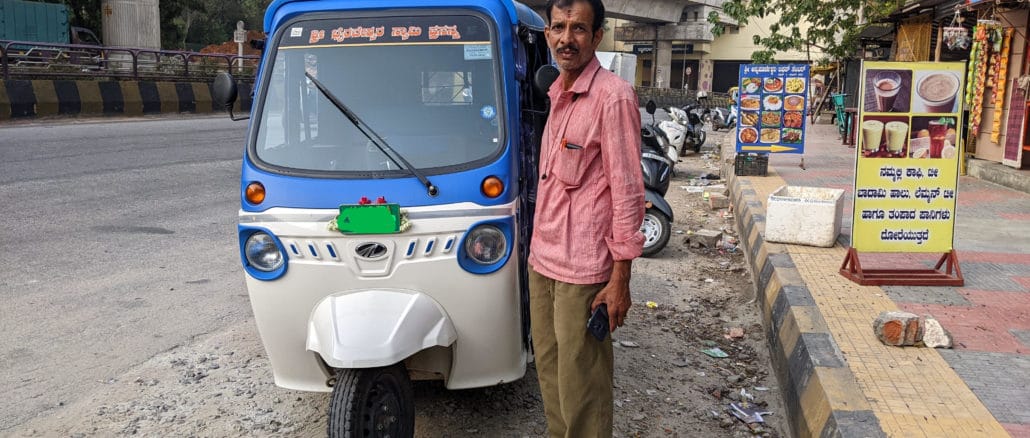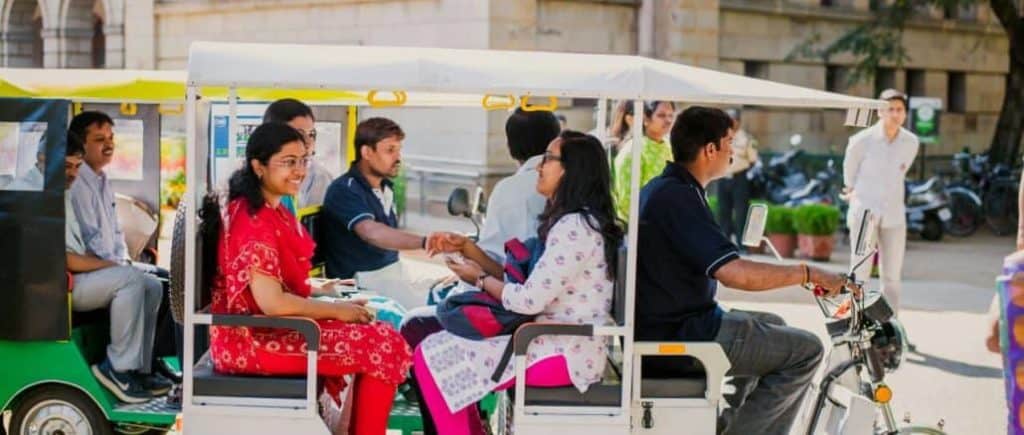
Any initiative for previous-mile connectivity has to be secure, responsible and cost-productive. A single of the most promising strategies to arrive up in new months that satisfies these necessities is electric-autos (E-autos).
Very last-mile connectivity has generally been an challenge that all general public transportation entities, particularly metro and bus systems, have to deal with. Bengaluru metro, for occasion, with its extension to Kengeri and Anjanapura, now has a total of 51 metro stations which need previous mile connectivity. An situation that will only turn out to be extra widespread as the metro expands to other areas.
Bengaluru Metro Transportation Corporation (BMTC), which handles the city’s bus provider, presently has 10 Targeted traffic and Transit Management Centres (TTMC) moreover essential bus station hubs and junctions distribute throughout Bengaluru. In spite of this, connectivity in more recent parts has normally been lousy.
The problem is acute in north Bengaluru around the Airport Street, and south/south-east Bengaluru in the Hosur Road-Sarjapura Highway-Marathalli-Whitefield stretches, exactly where bus connectivity declines swiftly as you shift away from arterial roadways like the ORR or the principal highways.
Issues for E-autos?
Unlike typical autos that run on LPG, E-autos are immune to price tag fluctuations of petroleum fuels. They are also a lot much less expensive to keep and give a superior riding practical experience for the two drivers and passengers. There is also the environmentally friendly aspect of them remaining air pollution-cost-free.
Read more: Guideline to setting up Electrical Motor vehicle Charging Stations in your community
Also, specified array panic, it is less complicated to function E-autos covering fairly tiny parts from a charging hub. A metro station or TTMC would hence make a superior hub level.
There are some problems to carry E-autos into the roadways. In accordance to Pawan Mulukutla, Director, Electrical Mobility at WRI India (Globe Means Institute), there needs to be much more governing administration incentives to encourage drivers to select E-autos around LPG autos.
Extra precisely, Pawan thinks the pursuing methods will go a extended way in encouraging e-autos:
- Apart from subsidies furnished by FAME (A lot quicker Adoption and Producing of (Hybrid &) Electric Motor vehicles) from the Central Federal government, there are no subsidies offered by the Karnataka Authorities. Kerala, Delhi and Maharashtra are some states that give order subsidies for EVs including 3-wheelers. Karnataka, having said that, presents exemption from road taxes to all electric vehicles, transportation and non-transport, and an successful tax level of 4% (usually all over 14% in Karnataka)
- Permits issued for autos require to have unique quotas for electric autos. For instance, the Delhi Federal government a short while ago issued car permits that had been reserved only for e-autos. This quota procedure requirements to be adopted even by Metro hubs by reserving some slots all over their stations exclusively for electrical autos. These hubs can also deliver charging amenities resolving assortment stress troubles,
Belling the finance cat
The following problem to stimulate desire for e-autos is finance. “An e-auto prices all around Rs 3.5 Lakhs, close to a lakh more than an LPG vehicle,” suggests Pawan. “While there are a lot of financing mechanisms obtainable with aggressive interest rates to acquire an LPG auto, the exact same is lacking for E-autos. Present fascination rates to invest in E-autos are as high as 25%. There have been initiatives in spots like Amritsar to companion with banking institutions like SBI to convey the fee down to 18%.
“The large desire charges are a signal of the possibility (see box) involved in lending to E-autos, and this is in which federal government encouragement and policies can help. Till that occurs, a third social gathering like a finance firm requires to take up the threat to provide down rates”.
The possibility variable
LPG autos have been close to for for a longer time and have acknowledged designs of earning, longevity of vehicles, depreciation, resale benefit and so on. But electric powered autos are new, and couple of. So it is a bigger gamble for a lender about how they’ll work out, especially when look at aspects like variety, and absence of adequate charging infrastructure which could affect earnings and the potential to pay back back the personal loan. Far more people purchasing and earning would lower the hazard as much more information will be out there.

In Bengaluru, Three Wheels United (TWU), a Finance startup strategies to do just that. “So much, we have managed to set 700 electric autos (both of those passenger and cargo) on the streets in Karnataka,” says Cedrick Tandong, Co-founder and CEO of TWU. “We system to get this number up to 5000 by the conclude of March 2023 and to 100,000 by 2025, with a break up of 75%-25% concerning passenger and cargo segments”.
Study far more: 7 motion things that could make India’s electric mobility vision a reality
According to Cedrick, “drivers can access loans at an desire amount of concerning 10-11%. This personal loan is presented by a third party NBFC and is repayable in 3 to 4 years.”
The startup resources autos from two suppliers, Mahindra and Piaggio. “While Piaggio autos come with swappable batteries from Solar Mobility, Mahindra’s autos do not,” provides Cedtric. “The on-road variety of these E-autos is all-around 100 Km, when the ARAI (Automotive Investigation Association of India) licensed range is 150 Km”.
Sun Mobility is a startup that has set up 12 battery swapping stations about the city. Acquiring swappable batteries can help with selection panic as you only require to make sure you have more than enough vary to get to the nearest swapping station. The startup strategies to set up around 100 battery swapping stations throughout the metropolis.
“From a experience-hailing viewpoint, there is no change involving employing an E-vehicle or an LPG a person as a result of common platforms like Uber or OLA,” claims Cedtric. “There are plans to get the job done with these platforms in the backend to bring in better bargains for E-autos”.
What does it necessarily mean for drivers?
Nagesh, who life in Nagarabhavi, switched to driving a Mahindra E-car about 6 months back after acquiring driven an LPG/petrol one particular for shut to 20 several years. Though he is pleased with the experience high-quality, he has experienced to facial area a few issues.
“The main problem is with charging, and I have to go property or locate a charging position when I am shut to working out of charge,” says Nagesh. “A whole recharge usually takes about 4 several hours, and I simply cannot manage to expend that substantially time idle. There are corporations like Bolt which have charging stations at various details in the town, and I can cost my automobile for Rs 20-30 which offers me all-around 30km. Speedier charging factors at various places in the city would be very helpful”.
Servicing the automobile has not been a sleek expertise for him both. “It can take at the very least a day or extra to support the car,” says Nagesh. “The nearest company centre is in Arakere, which is a appreciable distance from Nagarabhavi. Far more provider centers close to the city with more quickly provider is an urgent need”.
Resale worth of the vehicle, and make quality are some of the other discomfort factors for Nagesh.
On the other hand, so far he is delighted with the trade-off as irrespective of these difficulties his earnings have not been hit. His electric power bill for every thirty day period has absent up by Rs 2000, which is what he spends on gas. With much more and faster charging factors, he feels he can set his auto on the highway extended and enhance his earnings.
Would he suggest going electric to his LPG colleagues? “Definitely”, states Nagesh.
Many of these problems are possible to be addressed as E-autos achieve additional acceptance. Government incentives like exclusive permits, less difficult financing possibilities and a potent charging community are the require of the hour. Not only for E-autos but electric motor vehicles in basic.